Easy Persian recipes for beginners
Amira Arasteh introduces five easy-to-learn recipes that will not only tingle your taste buds, but show you that Persian food is one of the most underrated – and misunderstood – cuisines of the Middle East

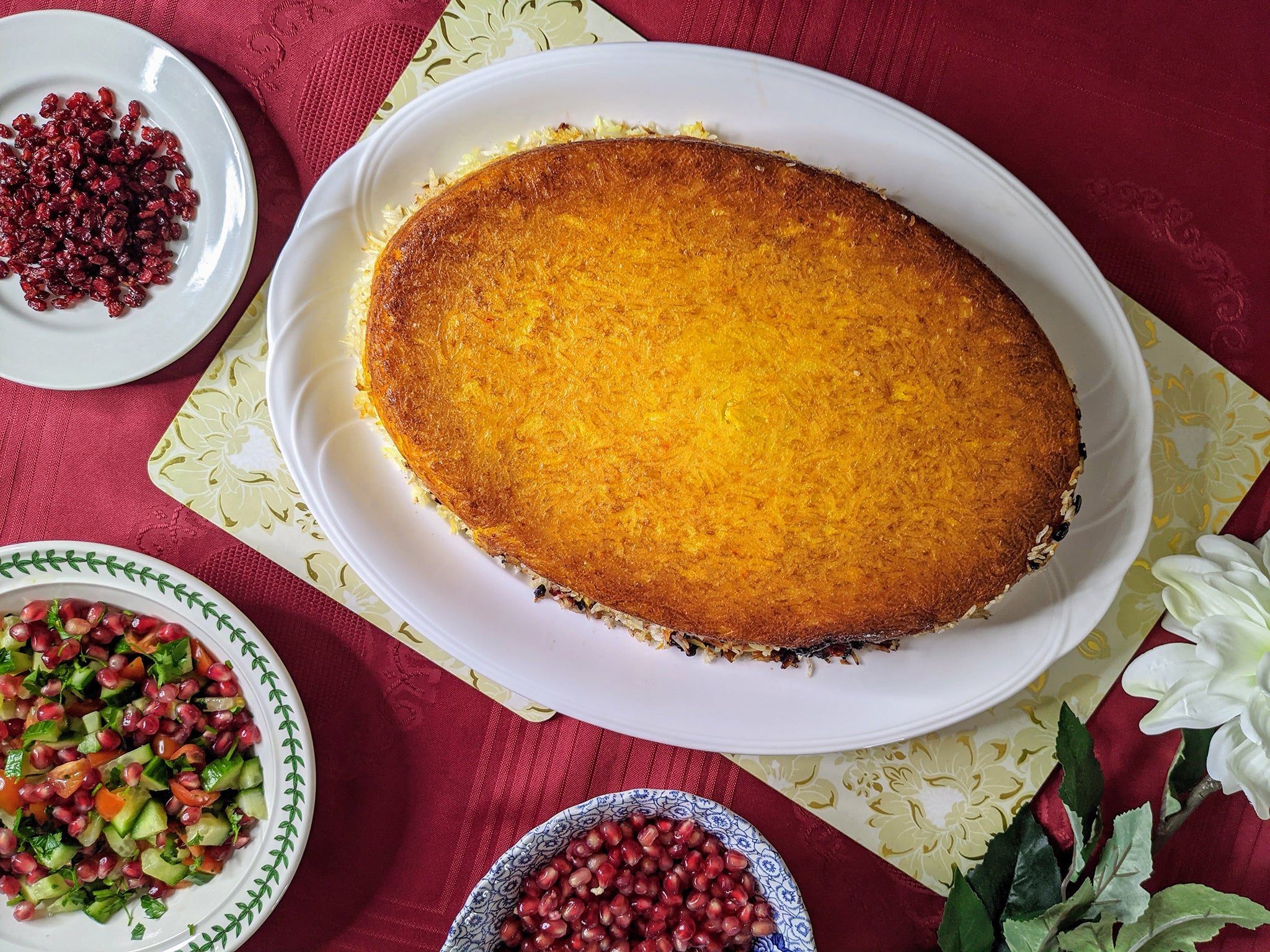
So you like falafel and shawarma wraps – I get it, I like them too. But did you know there’s so much more to Middle Eastern cuisine and, being Persian myself, I want to share a few of my family recipes and introduce you to my heritage cuisine.
Persian cuisine is mainly made up of a variety of stews and chargrilled kebabs. Now, these pot-cooked dishes come in so many varieties and the kebabs are far from the fast food we drunkenly devour after a night out. A lover of carbs, these dishes are almost always served with an impressive display of saffron rice or with some derivation of the humble potato.
The easy thing about Persian cooking is that the dishes tend to include chicken or lamb (although they can easily be made vegetarian) so this means that once you know how to cook your meat, you have your foundation knowledge, as it were, and then you just have to learn how to incorporate the rest of the stew’s ingredients.
Read more:
A common misconception is that Persian food involves ingredients such as halloumi; another is that the foods are spicy. While the cuisine bears some similarities to other Middle Eastern and even South Asian dishes, Iranian food focuses on fragrant herbs and spices, rather than anything hot like chilli.
Full of flavours and warming to the soul, it’s a great cuisine to get on your radar. If you’re looking to experiment in the kitchen or add another recipe to your personal cookbook, have a scroll through my five favourite dishes below.
Ghormeh sabzi
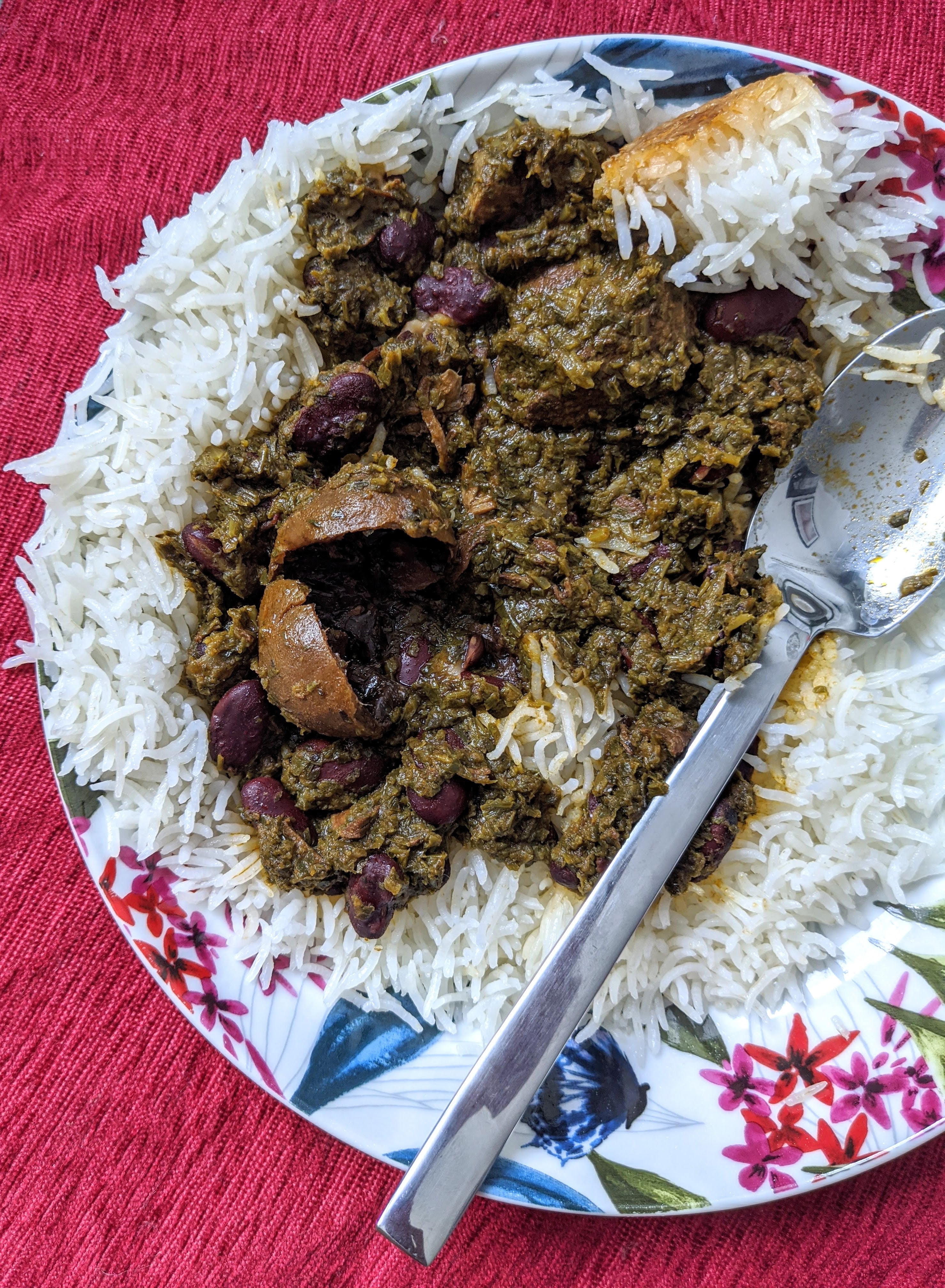
A very popular dish in Iran, ghormeh sabzi is a stew which, traditionally, consists of braised lamb and mixed herbs. It’s a very home-style cooked dish – although you can, of course, find it on the menu in your favourite Iranian restaurant. If you ask an Iranian person what their favourite Persian dish is, the chances are they’ll answer with ghormeh sabzi. Packed full of flavour and getting in your daily greens, this dish is incredibly delicious. Served with white basmati rice, either boiled or cooked in a Persian rice cooker, forming tahdig. But that’s a whole other dish for another time.
Serves 4
Prep time: 10 mins
Total cooking time: 1.5-2 hours
Ingredients
500ml water
Half leg of lamb, diced
4 limoo amani (dried Persian limes)
2tbsp tomato purée
½tbsp turmeric
½tbsp of advieh (Persian spice mix of turmeric, cardamom, cumin, cinnamon, coriander, pepper cloves, dried rose petals)
Mix of dried ghormeh sabzi herbs (find online or at Iranian supermarkets) OR a mix of 4 bunches parsley, 1 bunch coriander, 4 scallions (green parts only), 1tbsp dried fenugreek
½tsp salt
½tsp pepper
¼tsp ground saffron
250g kidney beans
3-4tbsp sunflower/olive oil
Method
Fry onions in some oil until translucent. Add the meat and fry for 3-4 minutes. Sprinkle some turmeric, advieh, salt and pepper onto the meat. Add your tomato purée and continue to fry for a further 2-3 minutes.
Add water and bring to the boil. Add saffron and then let it all simmer for an hour. Halfway through, pierce your dried limes with a fork and add to the meat. Add your kidney beans to the pot. Add your sabzi mix (all the greens) and simmer for another half an hour.
Check on the water in your stew (you want a balanced level of thickness). When ready (your preferred thickness), remove from the heat and serve with white rice.
Khoresh gheymeh
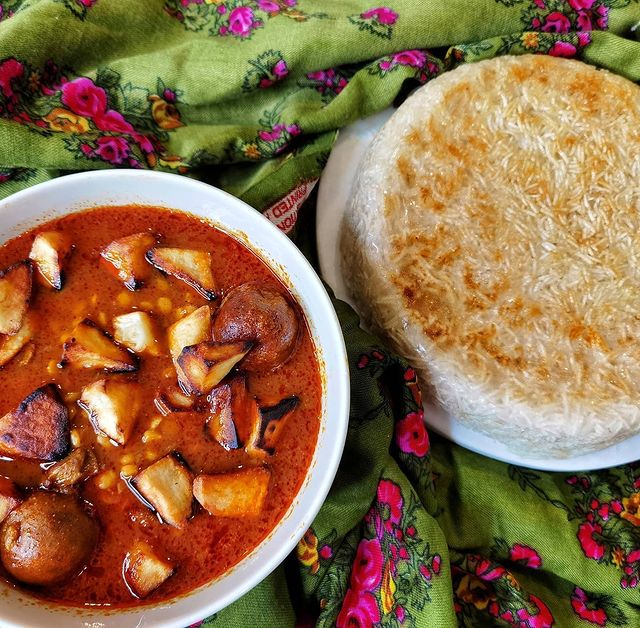
Gheymeh is probably one of my favourite khoreshs. A split pea stew, this also has lamb at the focus – but way less greens are involved. I love the mix of rich flavours and the sweetness of the tomato, saffron base of the stew, wonderfully balanced with the sharpness of the dried limes. The potatoes on top are absolutely not to be missed as, again, they offer a nice contrast to the stew with each munch of crispiness. The crispier the better, in my opinion, and there’s absolutely zero shame in grabbing some out of the oven as this can guarantee crispy chips over frying them yourselves and, in this case, crispy overrides “made from scratch”.
Serves 4
Prep time: 10 mins
Total cooking time: 1.5-2 hours
Ingredients
Half a leg of lamb, diced
1 onion
4 limoo amani
2tbsp tomato purée
½tbsp turmeric
½tbsp of advieh
½tsp salt
½tsp pepper
¼tsp ground saffron
1 cup of split peas
4 cups of water
2-3 potatoes
3-4tbsp sunflower/olive oil
Method
Fry onions in some oil until translucent. Add the meat and fry for 3-4 minutes. Sprinkle some turmeric, advieh, salt and pepper onto the meat. Add your tomato purée and continue to fry for a further 2-3 minutes. Add water and bring to the boil. Add saffron and then let it all simmer for an hour.
Halfway through, pierce your dried limes with a fork and add to the meat. Then add your split peas to the pot. While everything is simmering, chop your potatoes and fry them in a separate pan until crispy.
Check on the water in your stew. When ready, transfer the to a serving dish and add the crispy potatoes on top. Serve with white rice.
Abgoosht
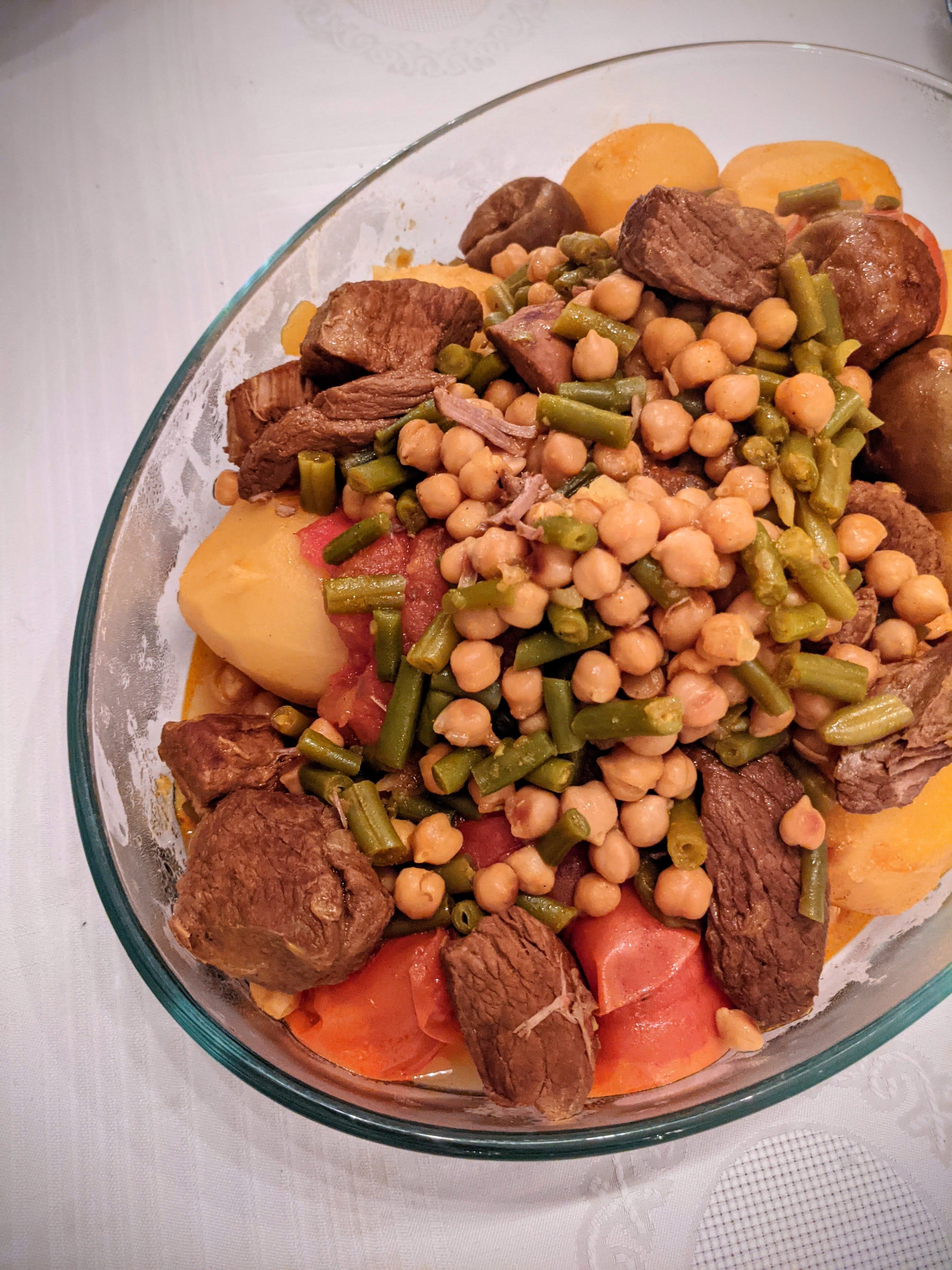
Another Iranian stew, abgoosht is also known as “dizi”, referring to the stoneware pots you would eat this dish from when dining at a restaurant. Consisting of lamb, chickpeas, potatoes and tomatoes, it’s a hearty stew that’s a favourite of many Iranians. It is also a home-cooked meal, however I hold fond memories of going to a specific restaurant in Tehran where you are served your food in one of these pots, along with a masher – so you can combine all the ingredients yourself at the table. A novelty idea but so fun.
Serves 4
Prep time: 10 mins
Total cooking time: 1.5-2 hours
Ingredients
500-700g lamb, diced
300g chickpeas
6 potatoes, peeled
4-6 tomatoes
3-4 limoo amani
3 cups of water
2 tsp tomato purée
1tbsp oil
1 pack of green beans
1 onion, chopped
1tsp turmeric
1tsp advieh
1 turn of pepper
1tbsp salt
½tsp saffron, ground and mixed with 1 cup of water
Method
Having previously soaked them overnight, boil your chickpeas on a low heat for about 30 mins.
Fry onions in some oil until translucent. Add the meat and fry for 3-4 minutes. Sprinkle some turmeric, advieh, salt and pepper onto the meat. Add your tomato purée and continue to fry for a further 2-3 minutes. Add water and bring to the boil. Add saffron and then let it all simmer for an hour.
Halfway through, pierce your dried limes with a fork and add to the meat. Add previously cooked chickpeas to the pot and more water if you feel it needs it. Add tomatoes, potatoes and green beans.
Put the lid on the pot and allow to cook on a medium heat for about an hour. Add more water if needed as you check on the stew.
Serve in a large dish and pour excess juice into soup bowls. Known as “tilt”, flatbread or pita is usually torn up and put into the soup to be enjoyed prior to the stew. Enjoy!
Fesenjān
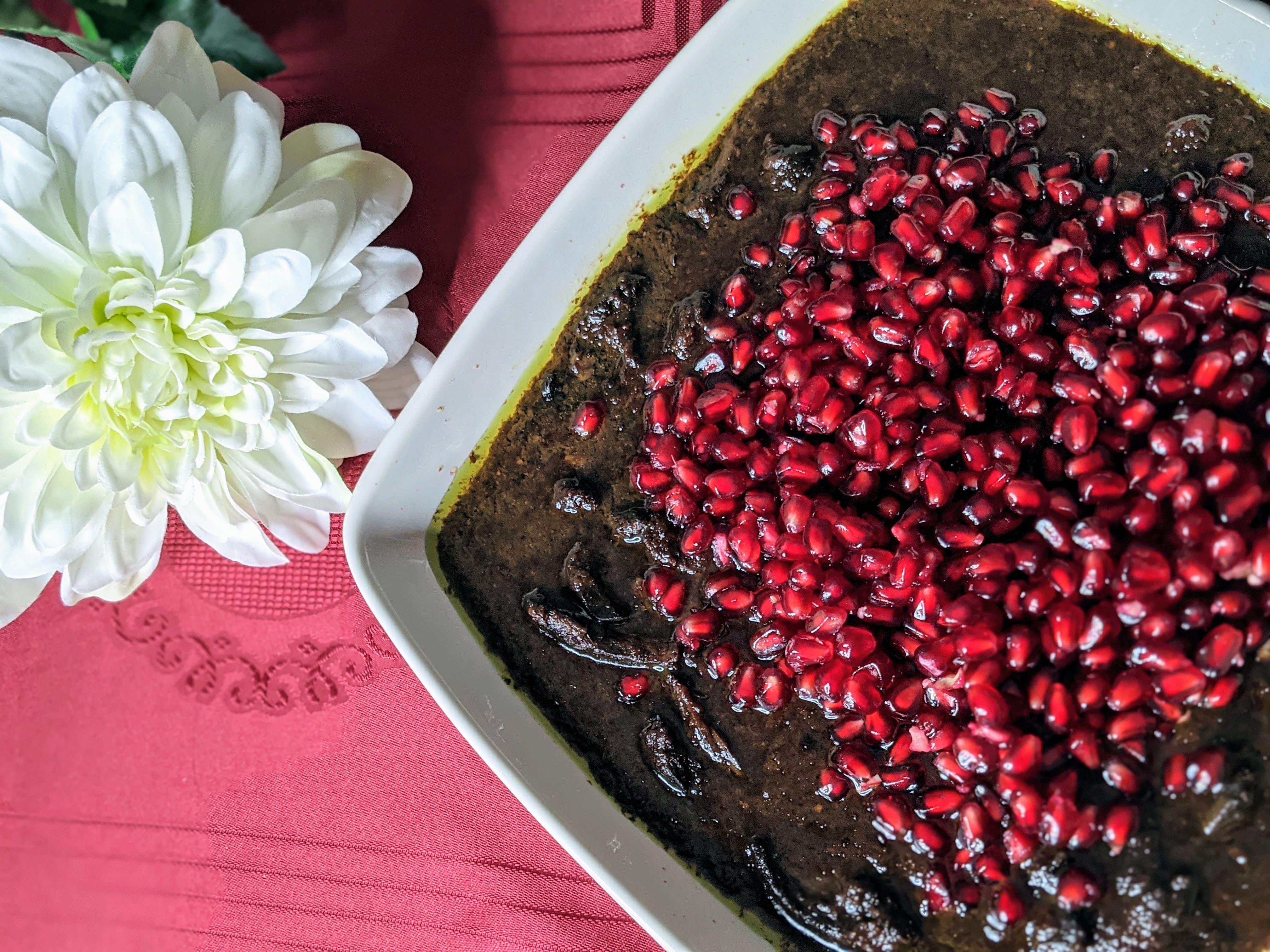
Fesenjān is one of the Iranian stews that, perhaps, has a more “marmite” like reaction to it. Made with either chicken or lamb, the sauce of the dish is dark brown, made entirely from ground walnuts and pomegranate molasses. A deliciously tart dish, there is so much rich flavour to this one. Traditionally cooked with duck, due to the availability of the poultry in Gilan province in Iran, from where the dish originated, it has moved to using chicken, lamb or even aubergine (to make the dish vegetarian) since. I personally prefer it with chicken, and therefore have used it in my recipe, but, really, it’s all about the deliciously sweet and sour flavours of the dish, rather than the type of meat or substitute used.
Serves 4
Prep time: 10 mins (longer if meat needs to defrost)
Total cooking time: 2.5-3 hours
Ingredients
250g walnuts
200ml pomegranate molasses
30ml water
4-5 chicken drumsticks/thighs
3-4tbsp oil
1tbsp turmeric
1 large onion, sliced
1 pomegranate, seeded (for garnish)
Salt and pepper, to taste
Method
Shell the walnuts and blitz in food processor until a paste forms, then add the water. Fry the chicken in a pot with the sliced onions and turmeric in oil. Add the walnut paste to the dish and season with salt and pepper. Pour over the pomegranate molasses. Bring to a boil over medium heat.
Reduce the heat to medium low, cover the pot and simmer for about 15 mins.
Reduce the heat to low and simmer, cover for about 1 hour or until the sauce has thickened (stirring regularly to make sure the sauce doesn't stick to the pot).
Your fesenjān is now ready and can be garnished with the pomegranate seeds on top.
Zereshk polo ba morgh
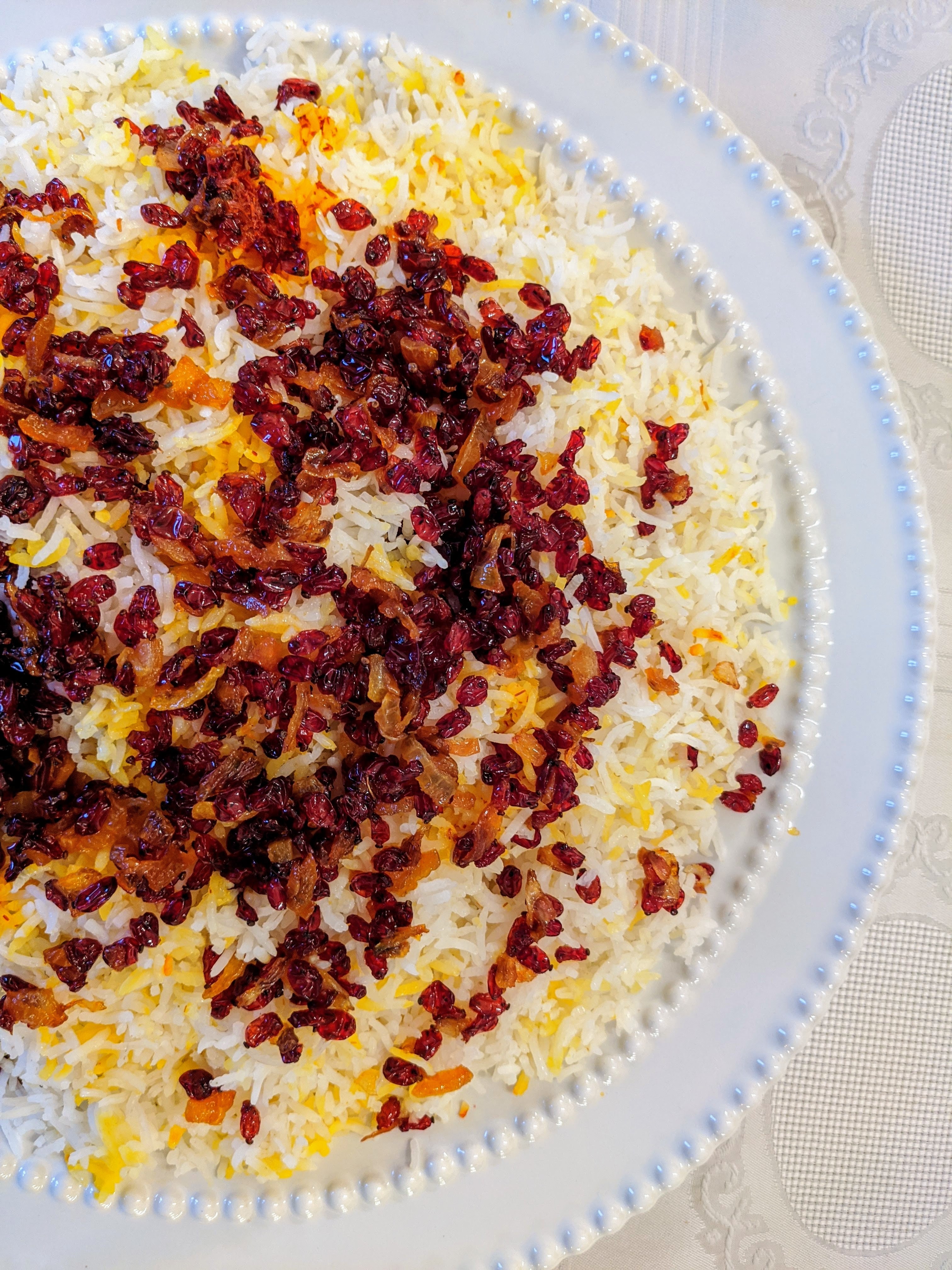
Persians are pretty proud of their rice and no better way to show this off than with zereshk polo. An impressive-looking dish upon serving because of the main ingredient being the beautiful dried barberries (zereshk). Known as the memooni (party) dish, it’s often seen as the main event in the spread of food served at big gatherings. The barberries are so regal in appearance, interwoven with the golden saffron-topped rice. Another dish serving up sweet and sour flavours, you’ll soon be addicted to the tartness of these berries. Although it can be enjoyed on its own, zereshk polo is always served with chicken – this can be cooked as you would for one of your khoreshs or simply roasted or grilled – whatever you fancy.
Serves 4
Prep time: 10 mins (longer if meat needs to defrost)
Total cooking time: 1.5 hours
Ingredients
4-5 chicken thighs/breast
500ml water
4 cups basmati rice
4tbsp olive oil
4 cups of water
1 onion
1tbsp turmeric
½ cup zereshk (dried barberries)
A pinch of ground saffron
Salt and pepper, to taste
Method
Fry the chicken in a pot with the sliced onions and turmeric in oil. Add water and bring to boil, then allow the chicken to simmer for about an hour. You can add a tiny bit of saffron (less than a pinch) to the pot as it boils.
While the chicken is cooking, wash your rice and pour it into a Persian rice cooker, along with four tablespoons of oil, four cups of water and salt to taste. Adjust your tahdig setting on the rice cooker and leave it until the dial has gone back to the beginning (about 40 minutes).
Dice the onion and add to a pan on low heat. Add your zereshk to the same pan and sauté on a low heat for a couple of minutes.
Layer your zereshk/fried onion mix into your cooked rice. Grind a few strands of saffron and mix with water to drizzle over your rice to give it colour. Serve your zereshk polo with the chicken on the side.
Join our commenting forum
Join thought-provoking conversations, follow other Independent readers and see their replies
Comments
Bookmark popover
Removed from bookmarks